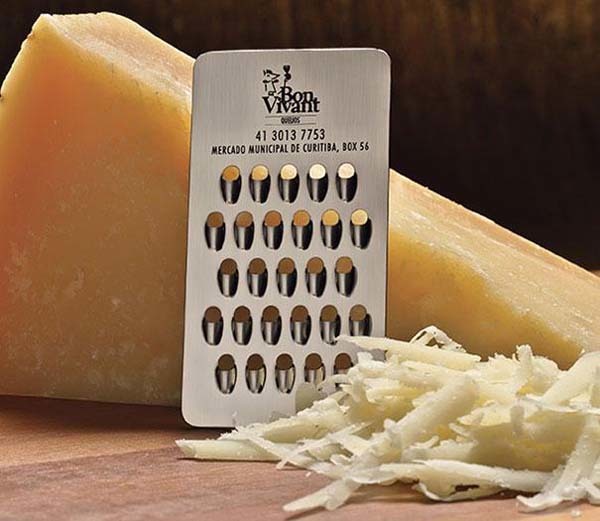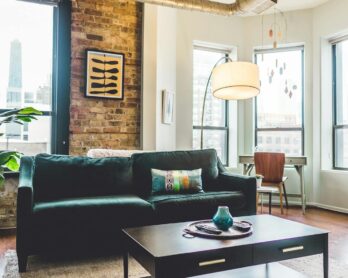How to Design a Business Card That People Will SAVE and USE!
You spend a good amount of money on printing business cards, so it’s a big kick in the pants if you find your business card, just tossed aside like a piece of garbage. You can stop that from happening by taking the time and design a business card people will hold on to, and actually use! Read this article for more!
Business cards are like miniature billboards.
They advertise your business, promote your brand, provide a call to action, and give people your basic contact information. Strong business cards can give people good impressions of your business, which can make them hold onto your business cards and use them again.
When made right, business cards can turn people you don’t know into new customers.
Check out this guide about how to design a business card people won’t want to throw away.
What to Know Before You Start
There are a few things you have to have before you start designing your business cards. For example, without an eye-catching logo or a clear message, people aren’t going to keep your cards for long.
If you don’t want your business cards ending up in the trash, make sure you have these things before you start designing.
A Strong Logo
If you don’t have a logo yet, you need one. And you need to make sure it looks just as good when it’s printed on a tiny business card as it does on the outside of your business office.
A logo that includes a lot of words or letters may not be recognizable on a business card.
Complicated logos with a lot of parts could also be hard to see when it’s shrunk.
Redesigning these types of logos might need to be your first step if you want it to stand out on your business cards (and things like letterheads, stationery, uniform shirts, pens, advertisements, etc.).
A Clear Understanding of Your Business
Before you create your business cards, you have to know what kind of message you want to convey. And the first part of that is understanding your business.
Asking yourself a few of these questions can help you get started:
- Who are you?
- What kind of product do you provide?
- Where can people find you?
- Why should people keep your business card?
- How can you help them?
Finding the answers to these questions will help you know what information you should include and help you make it clear and concise.
The Six Most Important Things When You Design a Business Card
Once you have a strong logo and a clear understanding of your business, it’s time to design the shape, size, and overall appearance of your business cards.
Use these six tips to design business cards people will want to save and use in the future.
1. Choose Your Shape
Your business cards don’t have to be rectangular. There are a lot of other options out there that can make your cards stand out.
Printing techniques are only getting more advanced and affordable (learn more here). When you use die-cutting, you can still print your business cards in bulk, no matter what shape they are.
So what other shapes are there?
If you want to stay simple, you can round the edges of your cards to give them a friendlier appearance. You can also turn your card into the shape of your mascot, make it look like one of your products, or give it a personal and original shape.
Just keep in mind, your business card must be able to fit into people’s wallets. A special shape can leave a good impression, but if you’re part of a formal industry, you may want to stick to a more traditional look.
2. Get Creative
Don’t assume your business card has to be a card at all. Give yourself room to be creative.
For example, if your company provides computer services, you can hand out flash drives with your business information on them. No one’s going to throw away a free flash drive, and every time they use it, they’ll be reminded of your business.
Do you sell cheese? Turn your business card into a mini cheese grater. Create a business card that holds flower seeds. Your business card could be a ruler, a bottle opener, a tool, etc.
3. Choose Your Size
Each country has their own standard business sizes. This is good to know if you want to create a traditional card or a card that stands out from the rest.
Here are a few size examples:
- North America: 3.5 inches by 2 inches
- Europe: 3.346 inches by 2.165 inches
- Oceania: 3.5f inches by 2.165 inches
But the most important things when it comes to the size of your cards is the bleed area, trim line, and safety line. Your trim line should be 0.125 inches from the edge, and the safety line should be 0.125 inches from the trim line.
The safety area refers to the place on your card where you can print information. All your business information should go in this spot.
4. Add Some Color
Bright colors can make you stand out, and people will keep colorful business cards 10 times longer than a more traditional business card.
But this doesn’t mean you should underestimate the effectiveness of black and white cards.
While creative businesses can get away with colorful cards, more formal businesses can create a sleek, professional card by using black, white, or grey.
5. Pick Your Font
Business cards are only a few inches wide, which means you only have a small space to work with. All your information has to fit on the card, but it also has to be readable.
Your text shouldn’t be any smaller than 8 point font. If you want certain elements to stand out, like your business name or website, the font for those things should be bigger.
At the same time, you don’t want your card to look cluttered. So make sure there is breathing room between your information.
As for the actual font itself, pick something that represents the feel of your business. Just make sure it’s easy to read.
6. Include Relevant Information
You don’t have a lot of space, so you want to make sure you include the most important information on your business cards. What that exact information depends on your business.
Here are a few of the most common things you may want to include:
- Your personal name
- Your company’s name
- Your job title
- A phone number
- An email address
- Your website URL
- Any relevant social media
- Your business address
- A QR code
- Your business slogan
Again, this information could vary depending on where you work. If you’re a freelancer who works from home, you may not need an address. QR codes are a less common business card staple, but they do give you a good way to transfer data.
How to Design a Business Card
You want people to remember your business card, keep your business card, and use your business card again. This means you need to stand out. When you design a business card, let yourself get creative. Add color, give it a fun shape, or add some images.
Need some other ways to market your business? Take a look at these eight marketing tips.













